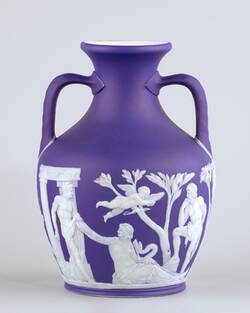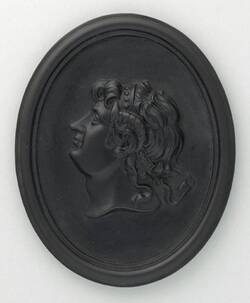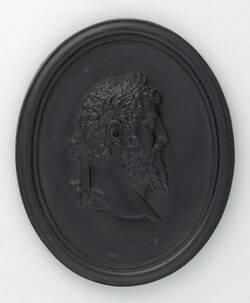Further Media
The original Portland or Barberini vase was, in the 18th century, one of the most famous and admired vessels of the early Roman Imperial period. The original glass amphora consists of a dark blue body with white overlay from which the relief was cut and polished using an elaborate technique.
From 1786, the innovative and enterprising potter Josiah Wedgwood worked on an exact copy of the vase. For this purpose, he developed a new ceramic material: the so-called jasperware, a type of stoneware that could be shaded in many different colours - in this case blue. From then on, thanks to the new ceramic recipe, the Portland vase could be reproduced in large numbers, almost on an industrial scale. In particular, Josiah Wedgwood's grandson took up the extensive production of these vases in various sizes around 1839.
Another form of imitation of antiquity by means of material references is shown here in the form of the medallions with portraits of Roman emperors made of so-called black basalt.
They are strongly reminiscent of antique cameos - raised reliefs cut into precious stones. With the invention of the earthenware called black basalt, Josiah Wedgwood had developed another material with new, very individual aesthetics that enabled him to create extremely fine and precise shapes. The reliefs could even compete with the fineness of ancient stone carvings.
The Wedgwood manufactory had a formative effect with its new earthen wares and designs in the neo-classicist style and was in great demand - even far beyond the borders of Great Britain. Wedgwood ceramics were enthusiastically collected in German-speaking countries, too.


